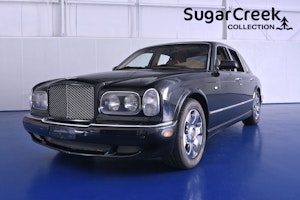Media | Articles
Best known for tractors, Fordson produced this badass truck, too
Early cars were a novelty. The functionality of horseless carriages took decades to catch up to the reliability of a horse. A farmer needs to get work done and can’t stop to repair something; tractors and horses reigned supreme. Horses had their problems, though, and the thought of an automobile that would complement a farm’s tractor was an interesting proposition and a great business opportunity. One that a name like Ford could capitalize on.
By the Fordson’s 1926 debut, the truck concept was nothing new. In fact, Ford Motor Company had already been producing Model T truck variants for years, but none had the whopping two-ton capacity of the Fordson. The snub-nosed truck is majority hauling space, with little in the way of concessions for comfort. In fact, the entire layout of the truck is pointed clearly at the function side of the spectrum, not the comfort side.
And yes, you read that massive cast radiator correctly. This is a Fordson, not a Ford. The name came from Henry Ford’s tractor business, which started out as Henry Ford and Son before slowly blending into simply Fordson. Ford was keen to tractors because he started life on a farm and could see the potential for upping production and yield of a farm by making the tasks performed by the farmer less arduous. The first Ford tractor prototypes were created in 1907, around the time Model T production began.
Though this truck doesn’t wear the Ford script, it shares a handful of parts with the Model T. The engine is a slightly different design, but many of the internal parts were adapted parts from the Ford production lines. The engine sits in a beefy yet simple ladder frame, right between the driver and passenger. Interestingly, the truck is fitted with a side-draft carburetor, which has the air/fuel mixture drawn down into the engine. During this time, it was much more typical to have the carburetor low, so if the carb is to leak or the engine backfire, the fire is likely contained quickly rather than fueling itself and burning down the entire vehicle.
Marketplace
Buy and sell classics with confidence
20191017151141)
With the engine set so far back in the chassis, the truck has a distinct snub-nose appearance. The cab has many characteristics of the “phone booth Model Ts” which were being produced by Ford’s efficient assembly line in 1926. Large flat panels comprise the cab, with its rear-hinged doors and slanted windshield.
The rear suspension is leaf springs stacked higher than my plate at an all-you-can-eat pancake feed, and cantilevered to boot. The ride of this truck is likely akin to no suspension at all, as those leaf springs aren’t going to deflect much until there is some real load on them.
As wild as this truck is, it represents the start of a market which we, as consumers, are obsessed with. Trucks now command a massive chunk of the global market, and this goofy-looking hauler was the first to be delivered to a customer. Since we can’t time travel, you can’t go back and be the first to own a commercial truck, but in a few weeks, you can bid on this truck at the Mecum Auction Davenport sale to become the owner of the first commercial truck. See how similar that is?
20191017151056)








20191017150954)
20191017151047)
20191017151106)
20191017151115)
20191017151124)
20191017151133)
20191017151150)
20191017151023)

